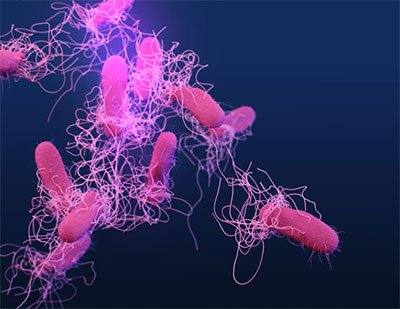Foodborne Nightmare: The Shocking Truth About Salmonella in America, What Exactly It is and How It is Affecting the Lives of US Citizens

Imagine this: you’re enjoying a delicious meal at your favorite restaurant, completely unaware that a microscopic enemy lurks within, waiting to unleash its wrath upon your unsuspecting body. This enemy is Salmonella, a type of bacteria responsible for an alarming number of foodborne illnesses in the United States.
According to the Centers for Disease Control and Prevention (CDC), a staggering 1.35 million Americans fall victim to Salmonella infections each year, resulting in 26,500 hospitalizations and 420 tragic deaths. These numbers paint a grim picture, highlighting a silent threat that poses a significant danger to public health.
But what exactly is Salmonella? And how can we protect ourselves from this invisible enemy?
1. Types and Illness: Salmonella encompasses various strains, causing salmonellosis, the primary focus of this enlightening CDC release. Certain strains can lead to typhoid fever or paratyphoid fever.
2. Symptoms: Most individuals infected with Salmonella experience diarrhea, fever, and stomach cramps. The onset of symptoms typically occurs between six hours to six days after infection, lasting for four to seven days. Some cases may see delayed symptoms or persist for weeks.
3. Severity and Complications: While most recover without antibiotics, severe cases demand medical attention. Salmonella can extend its reach to urine, blood, bones, joints, and the nervous system, potentially causing severe complications.
4. Diagnosis and Treatment: Lab tests detect Salmonella in stool, tissue, or fluids. Antibiotics are recommended for severe cases, those with weakened immune systems, adults over 50 with medical conditions, infants, and individuals aged 65 or older.
5. Long-Term Effects: Recovery is common, but some may experience lingering changes in bowel habits. Reactive arthritis, joint pain after infection, can persist for months or years, accompanied by eye irritation and painful urination in some cases.
6. Transmission Sources: Salmonella resides in the intestines of humans and animals. Infection sources include contaminated food, water, and contact with infected animals or their environments.
7. Vulnerable Groups: Children under 5, non-breastfed infants, adults over 65, and those with weakened immune systems are more susceptible to infections. Certain medications, like stomach acid reducers, also elevate the risk.
8. Antimicrobial Resistance: A critical concern is the rise of antimicrobial resistance in Salmonella, limiting treatment options for severe infections. Appropriate antibiotic use in both humans and animals is crucial to combat this growing challenge.
9. Prevention and Awareness: CDC emphasizes the significance of responsible antibiotic use to curb antimicrobial resistance. Awareness about Salmonella, its sources, and preventive measures is key to minimizing infections.
10. Prevalence in the United States: Staggeringly, CDC estimates that Salmonella causes approximately 1.35 million illnesses, 26,500 hospitalizations, and 420 deaths annually in the United States.
Stay informed, stay safe. For more detailed insights, credit goes to the Centers for Disease Control and Prevention (CDC).








